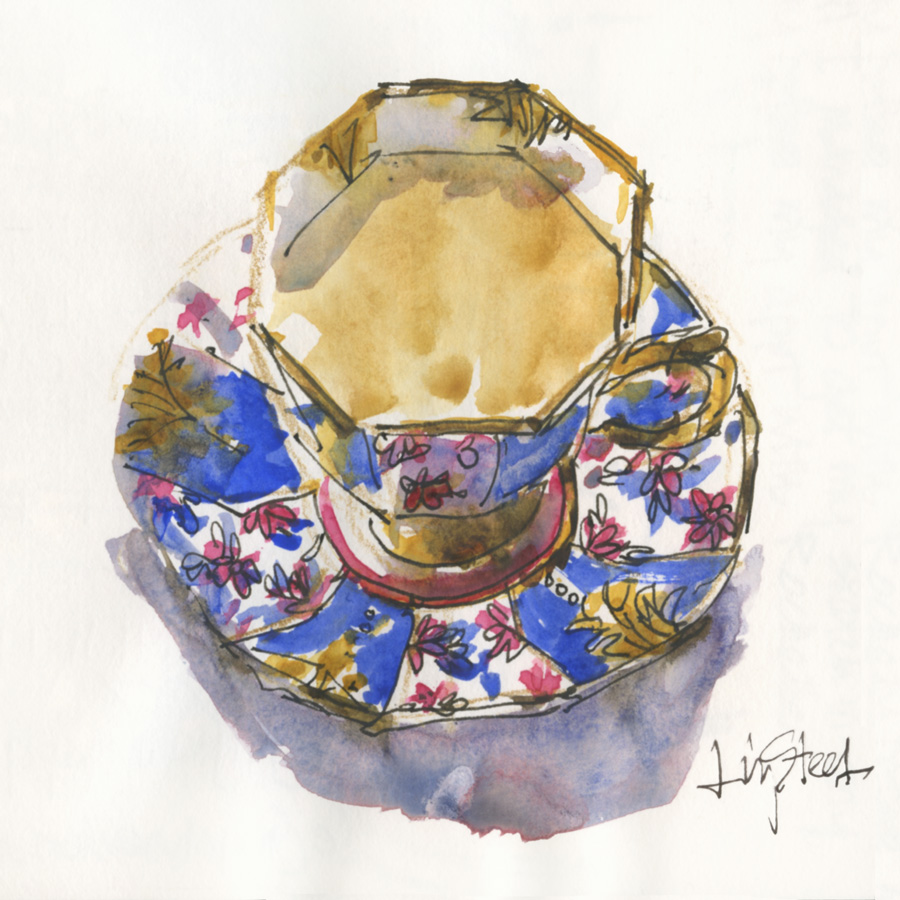
As I mentioned earlier, my week is on again in Sketchbook Skool: Seeing.
Recently, I thought it would be fun to re-visit my “SBS cup” again and realised that I hadn’t sketched it since the big film shoot, so almost two years ago. Wow!
But before I share my step-by-step I want to just talk about something that has come up in Seeing this week, and in fact, always comes up whenever people watch me sketching teacups . And that is:
“you make it look easy, but teacups are so hard!”
So a three points in response
- I couldn’t agree more – teacups are extremely hard! They combine a number of tricky situations to draw: ellipses, concentric ellipses, complex patterns, tricky foreshortening and important relationships between all the different elements. Please don’t ever get discouraged when drawing teacups! Ha! I just made that sound as if drawing teacups is a regular occurrence in life… well it is for me.
- How many teacup sketches do you think I have done since I started sketching regularly in Jan 2007?
That’s a nine year period and in 2015 I sketched 100 cups – click here for a few highlights. So my guess for the grand total is anywhere between 500-700 since I didn’t do many for the first few years but have become somewhat obsessive lately. One would expect that I could draw a perfect teacup after that insane number… but you know what? I still can’t. My ellipses are still wonky, my saucers not symmetrical and often my foreshortening isn’t correct. But, that’s ok, I enjoy every sketch I do and yes, all of that practice (and even the more conservative estimate 500 cups is a lot!) does make it easier, but I still have some degree of nervous tension anytime I sketch a cup. - But perhaps the greatest reason why it has become easier in recent times is that I spent a lot time analysing the structure of a cup and saucer. You can download an info sheet from this blogpost where I share all my secrets.
For those of you who are coffee drinkers, I did a similar exercise recently with my morning lattes. This analytical approach is something that I share a lot in my SketchingNow online classes.
In my SBS demo I explain this process of how I analyse (‘SEE’) a complex pattern like this one before I start sketching through means of thumbnails. But these days I work a lot more spontaneously and that is what I will share with you today.
So “lets get going!” (that’s a sketchingnow quote – hey?)
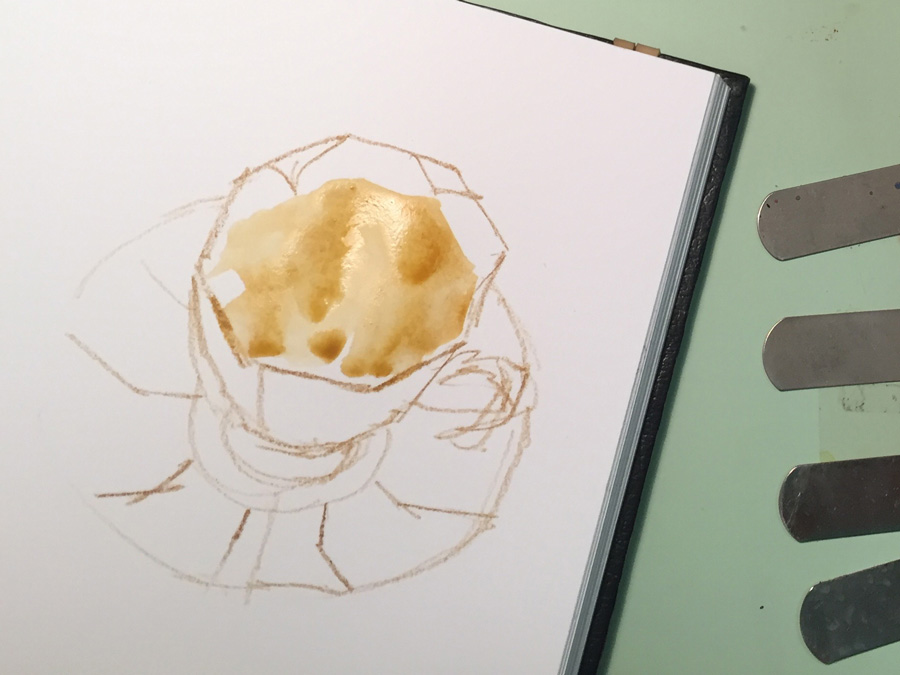
I pulled out the cup and made myself a new pot of Earl Grey tea and just went for it. I was interested to see whether the ‘seeing’ I did two years ago helped me now (ie. whether I could remember the pattern)… and it did! There was one small element in the design (the spacing of the pattern inside the cup) that I had forgotten, but all the rest felt like old friends. I find this is often the case when I sketch something the second (or third, or fourth) time.
A lot of my teacup sketches these days are very loose and experimental, so I did this in a bit of a hybrid style – somewhere between ‘traditional ink then wash’ and ‘completely random’!
I started with painting the tea shape as that was just about to move – of course I was drinking my tea at the time and I hate lukewarm tea! I then did a very quick loose setup with my favourite brown ochre watercolour pencil…
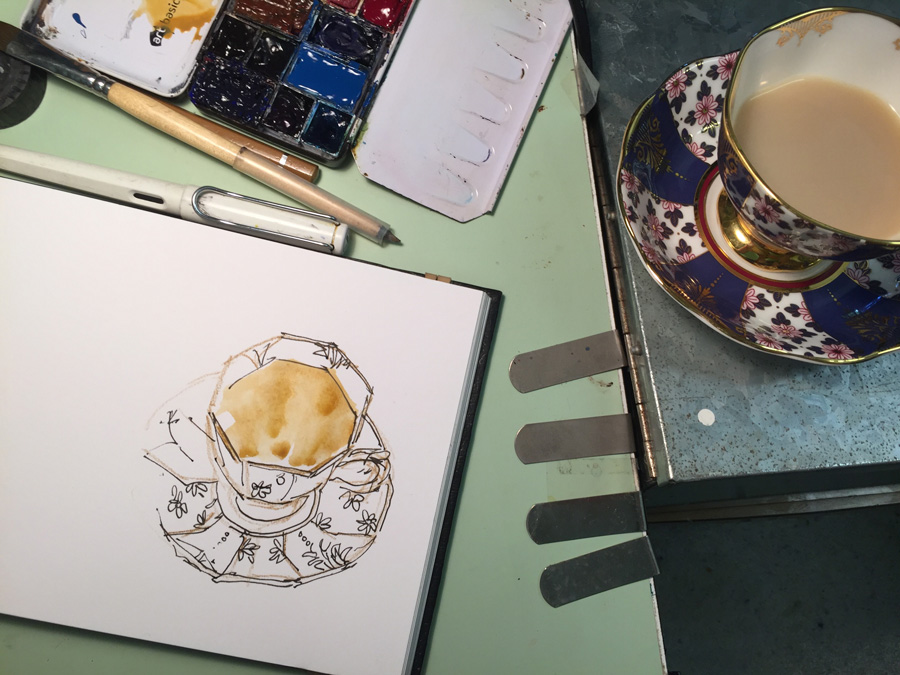
and then some ink lines. I wasn’t wanting to outline every part of the cup so I worked fast. What is interesting in this sketch is that I was able to refrain myself from drawing every outline in ink, enabling me to ‘lose’ some of the edges.
Note the level of the tea in the cup!
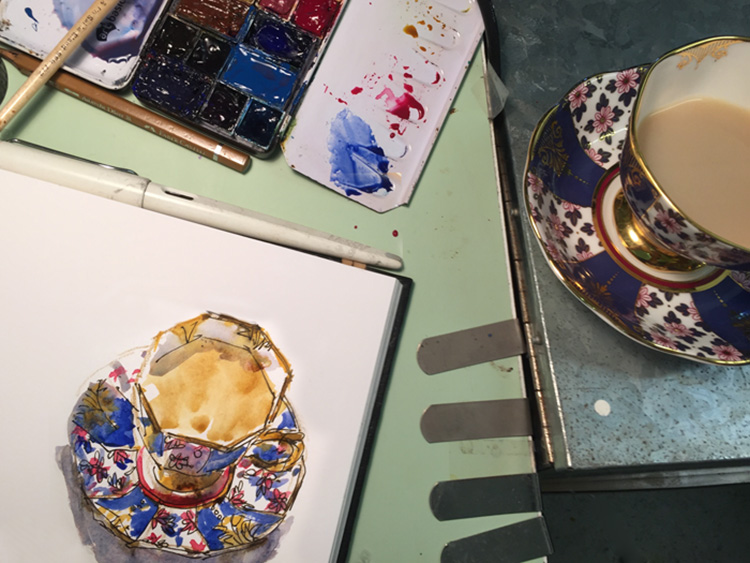
And then quickly added some paint and it was done. Once again notice the level of the tea!
This was a very quick cuppa sketch (even for me!) as I did the whole sketch while drinking the first cup. Normally it takes me the two cups that I get from my teapot to complete a sketch.
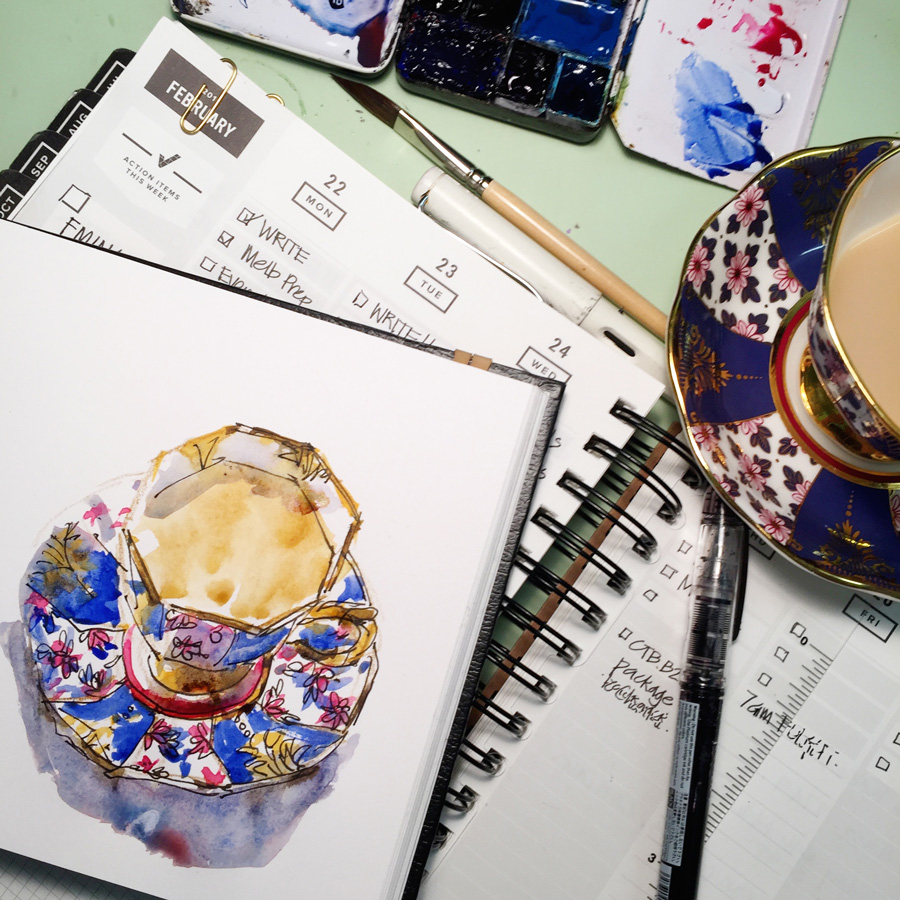
I then spent the second cup doing my usual planning for the day. It was a very wet day, so I opted for a cuppa tea rather than a walk to my local cafe as part of my morning planning session.
BTW both of my SketchingNow courses include teacup demonstrations. In Foundations it’s a more ‘traditional’ approach to ink and wash and in Edges it’s a very spontaneous sketch. Registration for Edges will open in a few days, so if you are interested and would like an early-bird discount you must sign up to my mailing list before the end of Wednesday 6 April to be eligible for it.
Subscribe to my mailing list for my monthly newsletters including first notification of my new SketchingNow Online Sketching Courses and face-to-face workshops.
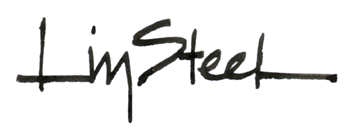
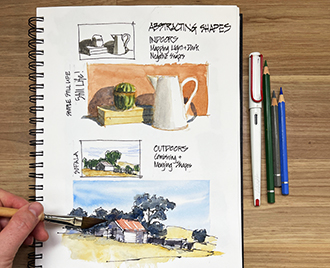

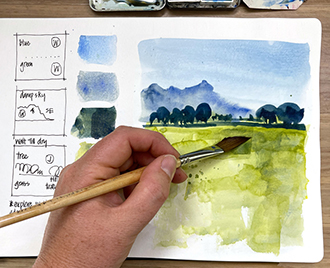
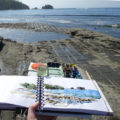
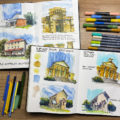
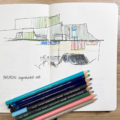
9 Comments
Wonderful blog post, Liz, and thanks for all the info about sketching the teacups. I have been practicing this a bit lately, as I have a number of nice teacups in my cabinet. Your information sheet was extremely helpful and hopefully my teacups will look less wonky in the future!
Yay! great. thanks Fiona!
I admit that (thanks to Liz’s “Seeing” lesson) I have become something of a compulsive cup/mug sketcher myself. They come in all sizes, colors and finishes (with interesting handles to boot), and they are a simple prop to set up and light when learning to draw volumes.
I have mugs shaped like spheres.
Mugs shaped like cylinders.
Mugs shaped like cones.
And even a mug with “edges,” shaped a bit like a box! (Some of these even have corporate writing on the sides, which makes drawing the design perspective all the more fun.)
Mugs encompass all of the major volume shapes (spheres, cylinders, cones, boxes — “hollowed out” — so I can draw their “insides,” too), and what’s best is that they are an economical “splurge.” I don’t feel any guilt about buying a new one, since if I shop at thrift shops and yard sales, I can get one for less than a pack of gum.
I do, however, find rendering a realistic cup is MUCH EASIER than rendering a saucer. The handle almost defines a cup, and the inside “depression” in a cup is nice and deep, making the shadow shapes easy to see.
BUT a solitary saucer is an entirely different thing. (Ditto for a lonely plate.)
Liz: blog help!
Plates tend to be very shallow, so the shadow shapes are weaker. It’s a disaster when I try to draw a plate, just by itself, with no food or spoon with it as a viewer crutch to suggest: “This vague shape is really a common piece of dinner ware, and not just some circle or oval that I cut out of a piece of flat paper and glued on the page.”
My plates (just plates) all tend to look like the latter. Sadly, some of my bowls (just bowls) do, too.
Mugs and cups and pitchers are easy to grasp (having easily recognizable shapes), but how about some of the non-cup dishware? Anything in the kitchen is game — silverware, bowls, plates — but some expert thoughts, please, on plates! They’re almost flat, but not completely flat — and therein lies the problem. Does making a solitary plate “easy to read” depend more on the subtleties in the design (how the floral motif, say, wraps around the inside, based on our viewing angle) more than the shadow shapes themselves? After all, we encounter solitary plates all the time in daily life, and can tell instantly that it’s a plate. How does our brain know that?
A future Liz blog “assignment’: Plate help. Plate, after dessert, maybe? — a few crumbs okay.
thanks Joanne… great idea, I will look into doing something on that!
Liz, please don’t ever stop sketching teacups and writing about them! I have discovered you and your blog only a few weeks ago through the Sketchbookskool website and I absolutely love all of your work, but the teacups must be my favourites. I can read a 1000 more posts about them! Thank you also for pointing out the sheer number of cups you have sketched over the years. It can be difficult to remember when you are trying to learn something that practice really is the only thing that ever can make “perfect” (knowing of course that there is no such thing as perfect).
Hi Desiree. SO glad to have you here and don’t worry I think I will be continuing to sketch them for a long time still
I love your cuppa sketches, Liz! They are tricky indeed. BTW are you sure, you have tea in your cup? It looks like a coffee with milk…;)
I can comfirn that it is tea… I NEVER put coffee in a teacup! ha ha! thanks Agata!
NEWSLETTER
Subscribe for first notification of workshop + online classes and more.